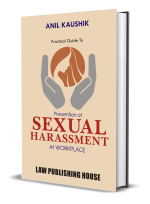Decision making is popularly put in two broad categories: open-ended decision making and close-ended decision making. Open-ended decision making recognizes the possibilities of more than one possible correct answer. Closed-ended decision making believes that to the type of problem which has to be solved there is only one correct answer. Illustratively, if the question is what are the elements which go into making of ‘water’, the answer is H2O, i.e. ratio of hydrogen and oxygen which will produce liquid, in this case termed the water. There cannot be any debate on this because there is only one correct answer. However, if there is a problem such as, where a plant needs to be located, there can be more than one location which will approximate the ‘correct’ answer. Clearly, the location of the plant is an open ended problem.
As it happens, practice and teachings of management follows the method of ‘classification’ and ‘culmination’ which is amenable to normal iterative form of mind.
If all problem solving and decision making could be classified, life would be a relatively simple proposition. Realities of life and decision making are somewhat different and herein is a tricky situation. Decision making always some ‘management’ but decision making as a craft is required in many areas other than ‘business’. Decision making also requires factoring in relationship, real life situation, analyzing the future. Above all,it requires determining what to say and what not to say. To operate with these concerns requires practice and instinct. An example may help to illustrate the point, say typically: which college to go to, when there is a range of choices available. There will be the issue of brand of the college, the location of the college, the facilities of learning available at the college etc. The class or social segment from which students come from can be a concern; the list can go on. It would be very difficult to create an approximation of what would be the ideal model of the choice. Information would be the bedrock. However, there are limits to areas on which one can get information or the required data. This is where instinct, judgement and attempt/ability to extrapolate, comes in. The medley of these elements is neither easy to reduce to a formula or to predict. This makes decision making trickier than usual.
In open-ended decision making principles of applied creativity are known to be useful. In the domain of close-ended decision making, statistical methods are of greater use. Statistics is more prone to predictive validity.
As indicated above, both these classifications are good so far as they ago. In the writing above. Indications have been given of a whole area where neither of the two approaches discussed would apply but would require something more and beyond. In the researches of the author of these lines, for questions beyond ‘open-ended’ and ‘closed-ended’ decision making, methods of informed creativity have been found to be useful.
‘Informed creativity’ requires recognizing that a conclusion may not be statistically verifiable or may not be open to applied creativity techniques but in that domain, one can converge towards a solution through learning from experiences of an analogues character. Illustratively, the Delphi method of research draws upon the wisdom of respondents and then moves on of a consensual approach.
Believing in a referent power, also, helps
The same method without use of a ‘structured’ questionnaire can be applied to everyday life issues of an unstructured variety.
An example can also be cited from the everyday life: “What to say and what not to say”, is neither a closed-ended question or an open-ended question. It requires judgement. So also the question: “How much to say and how to say it” There are other questions which need to be tackled like :” at what pitch of the voice one should speak and how to choose words”?
Here too the list can go on. Experience gives the answer. Learning from the practical domain, judgement is the kay. One has to learn the craft through thought, instinct and practice. This is what “informed creativity” is also about. The practice of these approaches can be rarefied to get into domains of relationship: learning to walk away from problems, itself becomes a craft! One has to recognize that life itself is a process flow which is not always amenable to classification, concretization and building formula.
What is true of life is also true of business, every successful businessman knows this in practice, In many situations he has to feel the solutions on his skin and he has to approach it more from ‘understanding’ rather than just ‘knowledge’. The making of a business manager is a complicated and fascinating process. There, nothing is greater than ‘being successful’. One often learns from experience, and not un-often develops one’s own formula of effectiveness. Those who understand this also know that the qualities of ‘business management’ are indeed needed in everyday life too.

























